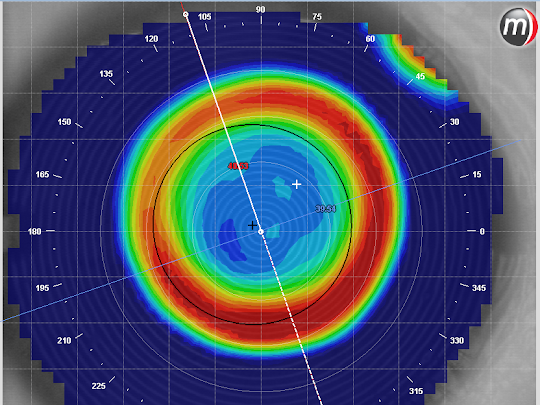What is orthokeratology (Ortho-k)?
Ortho-k is short for a term called orthokeratology. Ortho is derived from the latin word meaning straight and keratology is the science of altering the shape of the cornea, which is the clear front lens of the eye. In short, ortho k contact lens treatment is just a way of using a hard contact lens to mold, or sculpt, the front surface of the eye so you can see better.
The optometrist George Jessen first described this technique to the International society of contact lens specialists in 1962 and called it "orthofocus".
How does orthokeratology work?
Optometrists never recommend that contact lenses be worn at night. However, ortho -k lenses are designed specifically to be worn while you sleep. You wear the contact lens at night while you're sleeping and it shapes and molds the surface of your eye. The next morning you take out the contact lens and then you see clearly throughout the day.
The reason all of this works is because the front part of the cornea, the epithelium, can be slightly reshaped. The epithelial layer is about 50 microns thick. The Ortho K lens pushes on the central epithelium and squeezes the fluid from the center of the cornea out to farther edges and flattens the central cornea making the light entering your eye focus more correctly onto the retina in the back of the eye giving you better vision.
This reshaping is not permanent. The central cornea will spring back to its original shape if lens wear is discontinued. This requires you to wear these types of ortho-k lenses every single night to maintain clear vision in the day. It takes about one to two weeks of wearing them every night just to get the eye to be about the shape that it needs to be in order to see your very best. You also need to keep wearing the lenses every night, otherwise, if you don't, the surface of the eye will turn back to its original shape and you won't see as clearly again.
All our orthokeratology lenses are custom designed using advanced corneal topography. This technology maps the contour of your cornea very precisely and creates the data from which your lens design will be based on. The data from this analysis is then transferred over to Wave contact lens design software where the doctor will design the first mold. This design is sent to a special contact lens fabricating laboratory where it is manufactured to precisely match the lens design the doctor created. Once the lens is received in the office, you will be notified to make an appointment for your initial fitting.
Who is a good candidate for orthokeratology lenses?
Anybody who doesn't really like to wear glasses or contact lenses throughout the day. For example, individuals who work in law enforcement, or athletes. Maybe if you're not a good candidate for LASIK eye surgery, or perhaps you have dry eyes and can't wear contacts throughout the day. Patients will have better results when they have lower prescriptions and softer corneas, which yield more easily to contact lens sculpting. Myopia is easier to treat than hyperopia. Large amounts of astigmatism also work against achieving good outcomes.
Another very good candidate for these types of lenses are children that are developing myopia. That's because studies have shown that using these types of lenses can slow down the rate of their myopic progression by almost 50 percent. The exact way this works is still being researched and discussed with several hypotheses explaining the possible mechanism. In practice, the technique reduces myopic progression and that's of great interest to parents and practitioners. Any way doctors can slow myopia will prevent future pathologic myopia and possibly blindness for many people. Ortho-k is one of the more effective techniques being used in myopia management today.
